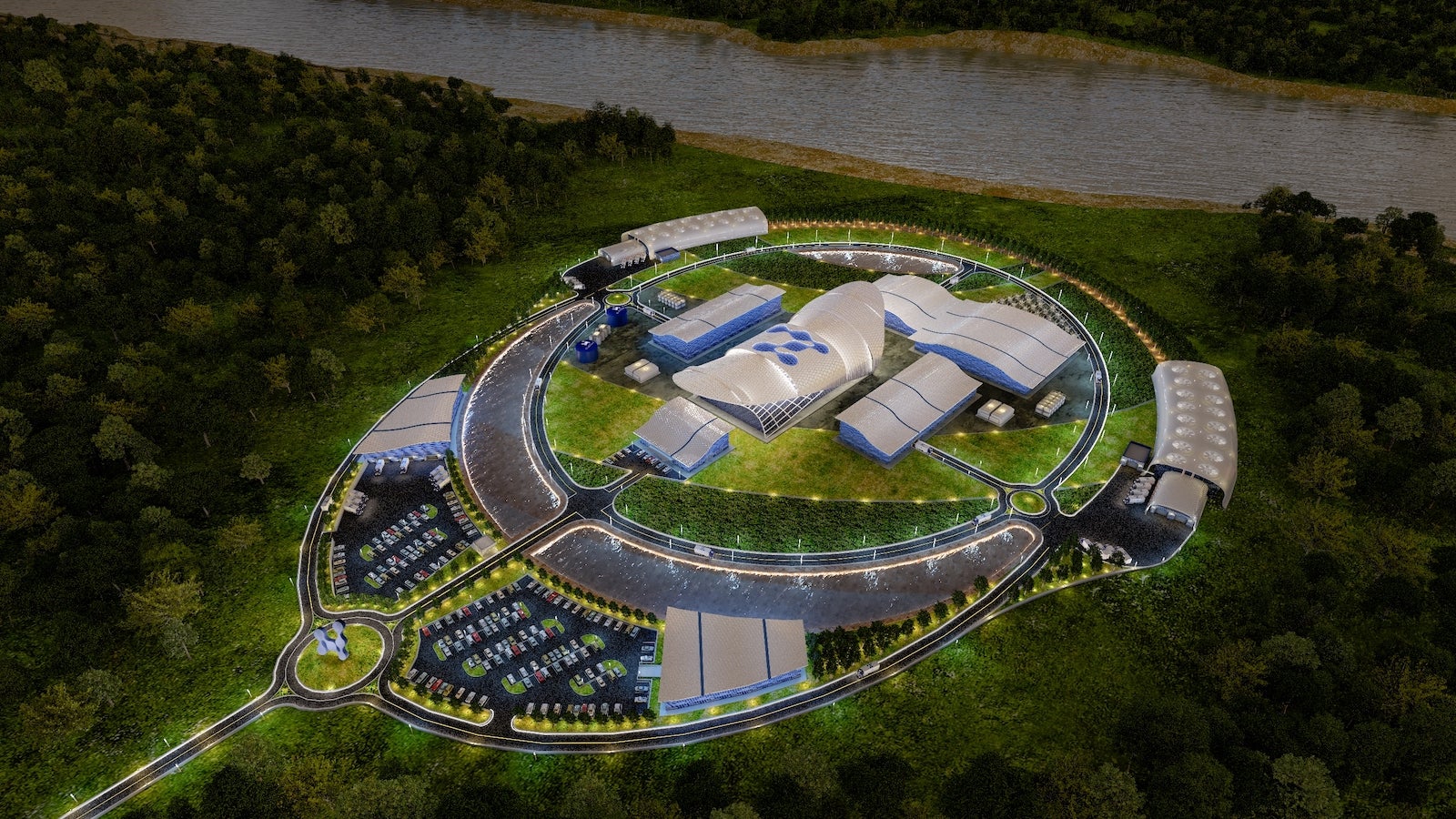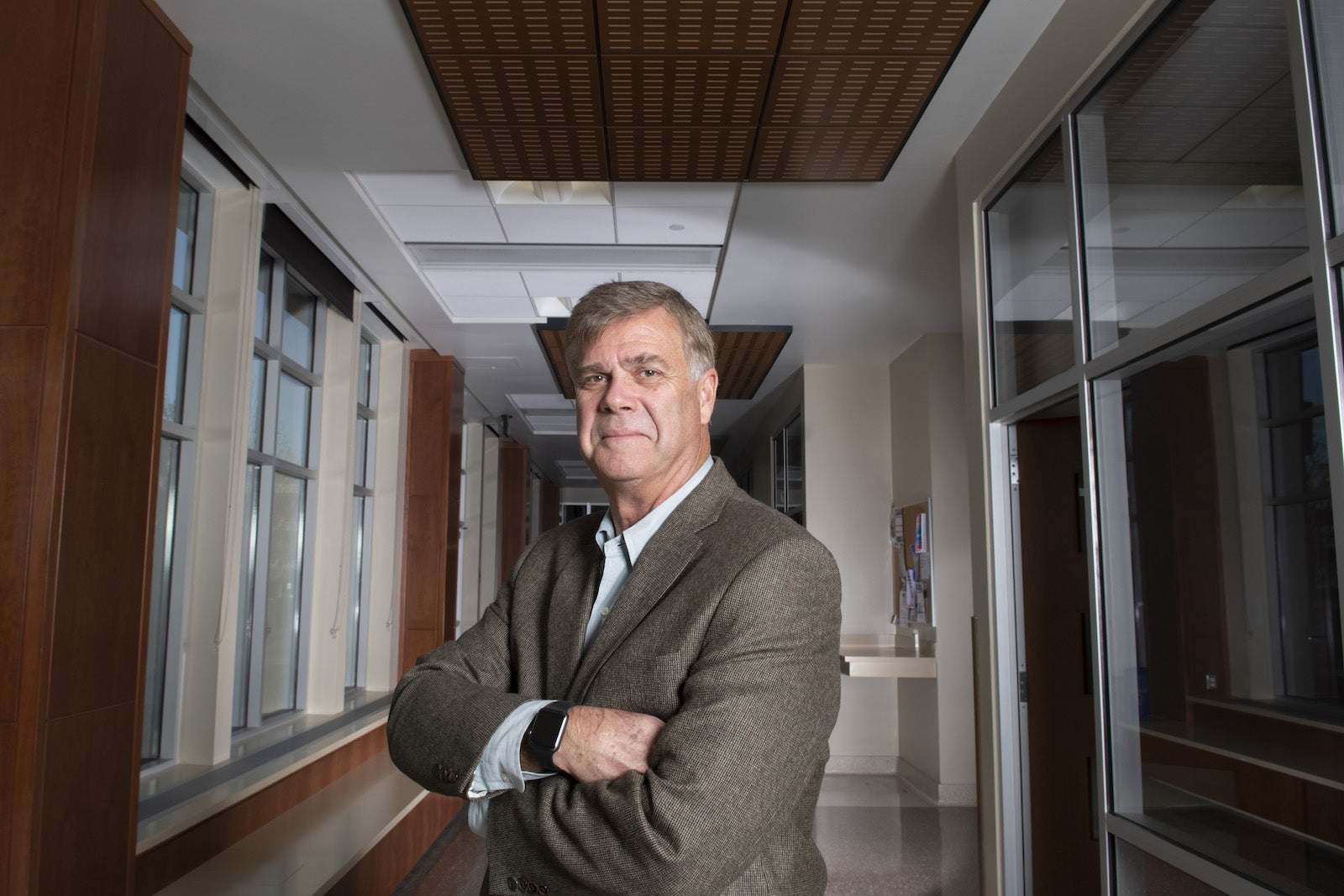–By Matt Jones

“It’s going to be big,” said Boise State economics professor Geoff Black.
For the past decade, Black has conducted research on energy and economic development, including studies on small modular reactors (SMRs), the impacts of energy development on economic activity and tax revenues, and the economic impacts of large federal research and development facilities.
Regional Economic Development for Eastern Idaho contacted Black to analyze the potential economic impact of bringing new nuclear technology to Idaho Falls. He partnered with the Idaho Policy Institute at Boise State and the McClure Center for Public Policy Research at the University of Idaho to conduct his work.
His conclusion? Idaho is poised to become a hotbed of production for the most innovative, carbon-free nuclear energy technology in the world within the next few years – a new energy production facility will be developed by 2026 at the Idaho National Laboratory in Idaho Falls.
The new eastern Idaho development will rely on technology from NuScale Power, a leading innovator of SMR technology based in Portland, Oregon. The company received funding from the U.S. Department of Energy and it designed the world’s first and only SMR to undergo design certification review by the U.S. Nuclear Regulatory Commission.
“NuScale’s going to be the first to deploy these things,” Black said. “And if we don’t produce SMRs now, we’ll be importing them from other places in no time. Why not create the jobs here?”
The research by Black and Steven Peterson, a clinical assistant professor in economics at the University of Idaho and researcher for the McClure Center for Public Policy Research, confirms that the addition of an SMR plant in Idaho will create new jobs and increase revenue flowing throughout the region. The three-year construction phase for the facility alone will provide roughly 2,000 new jobs and, in turn, labor income – which accounts for wages and benefits – will increase by $644 million. And as a bonus, $2 billion of annual output is projected, all while reducing carbon emissions.
Clean energy for all
Through an economic lens, Black is determined to address “energy poverty” as the United Nations calls it, which is the inability of developing countries to acquire cost-effective energy sources. Companies across the world are looking to reduce carbon emissions from power-generating facilities. Meanwhile, they are facing an increasing demand for global energy. While the pressures from climate change continue to mount, Black’s research explores the economic aspects of this new source of energy: light-water SMRs.
Large nuclear power plants require money and infrastructure and can be out of reach for many nations, especially those with emerging economies. Light-water SMRs have the ability to run on smaller, more dispersed electric grids than large nuclear or coal power plants. Importantly, they can be paired with renewable energy sources such as solar and wind facilities to provide baseload power when renewables are unable to produce. This makes them an attractive, viable option for developing countries as well as industrialized nations seeking to address climate change.
Carbon-free power comes from few sources. SMRs limit carbon and greenhouse gas emissions by creating power that is much cleaner than any type of fossil fuel, much like wind and solar. A study by the Nuclear Energy Institute found that 12 NuScale SMRs can generate the same amount of energy as a 130,000-acre wind farm, which spans over 200 square miles. They require much less space to produce energy.
“Ten years ago, we realized that it was past time to begin to take climate change seriously,” Black said. “On a global level, one thing that’s going to adversely affect everything that we do is if developing countries go down the path of meeting increased energy demand by increasing their use of high carbon fuel.”

Safer and longer-lasting
Along with the economic benefits, SMRs are designed with enhanced safety features and require less maintenance than other power-generating sources that soak up larger operating costs. On average, the technology lasts 60 years, surpassing the lifespan of wind farms and solar panels.
According to Black, SMRs are smaller than large gigawatt nuclear reactors and therefore easier and cheaper to manufacture, ship and install. Unlike larger nuclear reactors, reactors designed by NuScale automatically shut
down and cool off, making them safer. And what if power outages occur? The reactor’s core, which is positioned underground, cools naturally and doesn’t require any action from humans or computers to reset.
He believes the rest of the world will follow Idaho’s lead on redirecting the future of nuclear energy and, at the same time, addressing climate change.
“I’ve been working with emerging economies and international agencies to explore avenues of facilitating economic development by skipping over the increased use of fossil fuels and providing better options for these countries,” Black said.
Once the construction of the facility is complete, the team estimates that 360 on-site jobs will become available. Operations are estimated to increase labor income by nearly $48 million, increase economic output by $81.15 million, add $2.97 million to local and state tax revenues annually, and add $10.86 million to federal tax revenues annually.
This project in rural eastern Idaho has the power to help address “energy poverty” and, at the same time, provide a place where Idahoans can train these emerging economies to install and operate SMR energy projects globally.